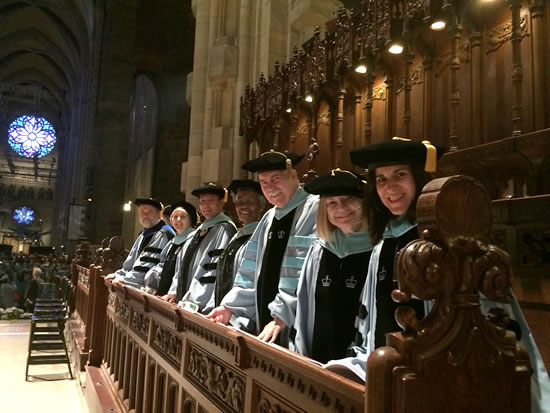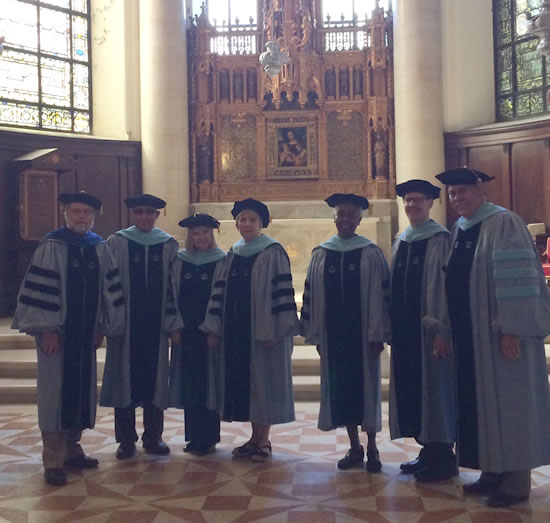Dr. Louisa Moats, the nationally-renowned teacher, psychologist, researcher and author, was one of the contributing writers of the Common Core State Standards (CCSS). The CCSS initiative is an attempt to deal with inconsistent academic expectations from state-to-state and an increasing number of inadequately prepared high school graduates by setting high, consistent standards for grades K-12 in English language arts and math. To date, 45 states have adopted the standards. I recently had the opportunity to discuss the implementation of the CCSS with Dr. Moats.
Dr. Bertin: What was your involvement in the development of the common core state standards (CCSS)?
Dr. Moats: Marilyn Adams and I were the team of writers, recruited in 2009 by David Coleman and Sue Pimentel, who drafted the Foundational Reading Skills section of the CCSS and closely reviewed the whole ELA section for K-5. We drafted sections on Language and Writing Foundations that were not incorporated into the document as originally drafted. I am the author of the Reading Foundational Skills section of Appendix A.
Dr. Bertin:What did you see as potential benefits of establishing the CCSS when you first became involved?
Dr. Moats: I saw the confusing inconsistencies among states' standards, the lowering of standards overall, and the poor results for our high school kids in international comparisons. I also believed that the solid consensus in reading intervention research could be reflected in standards and that we could use the CCSS to promote better instruction for kids at risk.
Dr. Bertin: What has actually happened in its implementation?
Dr. Moats: I never imagined when we were drafting standards in 2010 that major financial support would be funneled immediately into the development of standards-related tests. How naïve I was. The CCSS represent lofty aspirational goals for students aiming for four year, highly selective colleges. Realistically, at least half, if not the majority, of students are not going to meet those standards as written, although the students deserve to be well prepared for career and work through meaningful and rigorous education.
Our lofty standards are appropriate for the most academically able, but what are we going to do for the huge numbers of kids that are going to "fail" the PARCC (Partnership for Assessment of Readiness for College and Careers) test? We need to create a wide range of educational choices and pathways to high school graduation, employment and citizenship. The Europeans got this right a long time ago.
If I could take all the money going to the testing companies and reinvest it, I'd focus on the teaching profession -- recruitment, pay, work conditions, rigorous and on-going training. Many of our teachers are not qualified or prepared to teach the standards we have written. It doesn't make sense to ask kids to achieve standards that their teachers have not achieved!
Dr. Bertin: What differences might there be for younger students versus older students encountering it for the first time?
Dr. Moats: What is good for older students (e.g., the emphasis on text complexity, comprehension of difficult text, written composition, use of internet resources) is not necessarily good for younger students who need to acquire the basic skills of reading, writing, listening and speaking. Novice readers (typically through grade three) need a stronger emphasis on the foundational skills of reading, language and writing than on the "higher level" academic activities that depend on those foundations, until they are fluent readers.
Our CCSS guidelines, conferences, publishers' materials and books have turned away from critical, research-based methodologies on how to develop the basic underlying skills of literacy. Systematic, cumulative skill development and code-emphasis instruction is getting short shrift all around, even though we have consensus reports from the 1920's onward that show it is more effective than comprehension-focused instruction.
I'm listening, but I don't hear the words "research based" as often as I did a decade ago -- and when CCSS proponents use the words, they're usually referring to the research showing that high school kids who can't read complex text don't do as well in college. Basic findings of reading and literacy research, information about individual differences in reading and language ability, and explicit teaching procedures are really being lost in this shuffle.
Dr. Bertin: What benefits have you seen or heard about so far as the CCSS has been put in place, and what difficulties?
Dr. Moats: The standards may drive the adoption or use of more challenging and complex texts for kids to read and a wider sampling of genres. If handled right, there could be a resurgence of meaty curriculum of the "core knowledge" variety. There may be more emphasis on purposeful, teacher-directed writing. But we were making great inroads into beginning reading assessment and instruction practices between 2000-2008 that now are being cast aside in favor of "reading aloud from complex text" -- which is not the same as teaching kids how to read on their own, accurately and fluently.
Dr. Bertin: What has the impact been on classroom teachers?
Dr. Moats: Classroom teachers are confused, lacking in training and skills to implement the standards, overstressed and the victims of misinformed directives from administrators who are not well grounded in reading research. I'm beginning to get messages from very frustrated educators who threw out what was working in favor of a new "CCSS aligned" program, and now find that they don't have the tools to teach kids how to read and write. Teachers are told to use "grade level" texts, for example; if half the kids are below grade level by definition, what does the teacher do? She has to decide whether to teach "the standard" or teach the kids.
Dr. Bertin: You've raised concerns elsewhere that CCSS represents a compromise that does not emphasize educational research. How do the CCSS reflect, or fail to reflect, research in reading instruction?
Dr. Moats: The standards obscure the critical causal relationships among components, chiefly the foundational skills and the higher level skills of comprehension that depend on fluent, accurate reading. Foundations should be first! The categories of the standards obscure the interdependence of decoding, spelling, and knowledge of language. The standards contain no explicit information about foundational writing skills, which are hidden in sections other than "writing", but which are critical for competence in composition.
The standards treat the foundational language, reading and writing skills as if they should take minimal time to teach and as if they are relatively easy to teach and to learn. They are not. The standards call for raising the difficulty of text, but many students cannot read at or above grade level, and therefore may not receive enough practice at levels that will build their fluency gradually over time.
Dr. Bertin: How about recommendations for writing?
Dr. Moats: We need a foundational writing skills section in the CCSS, with a much more detailed progression. We should not be requiring third graders to compose on the computer. Writing in response to reading is a valuable activity, but teachers need a lot of assistance knowing what to assign, how to support writing and how to give corrective feedback that is constructive. Very few know how to teach kids to write a sentence, for example.
Dr. Bertin: In an article for the International Dyslexia Association, you said "raising standards and expectations, without sufficient attention to known cause and remedies for reading and academic failure, and without a substantial influx of new resources to educate and support teachers, is not likely to benefit students with mild, moderate, or severe learning difficulties." You also mention that 34 percent of the population as a whole is behind academically in fourth grade, and in high poverty areas 70-80 percent of students are at risk for reading failure.
How does the CCSS impact children who turn out to need additional academic supports for learning disabilities, ADHD or other educational concerns?
Dr. Moats: I have not yet seen a well-informed policy directive that addresses the needs of these populations. There are absurd directives about "universal design for learning" and endless accommodations, like reading a test aloud, to kids with learning disabilities. Why would we want to do that? The test itself is inappropriate for many kids.
Dr. Bertin: How does it relate to concerns you have about teacher training in general?
Dr. Moats: What little time there is for professional development is being taken up by poorly designed workshops on teaching comprehension of difficult text or getting kids to compose arguments and essays. This will not be good for the kids who need a systematic, explicit form of instruction to reach basic levels of academic competence.
I've been around a long time, and this feels like 1987 all over again, with different words attached to the same problems. When will we ever learn?


